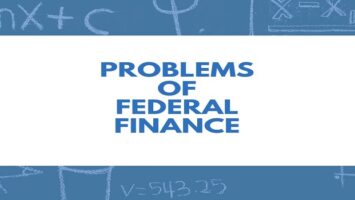Three Aspects of a Tax:
Sir Josiah Stamp, while commenting upon the canons of Adam Smith analyzed the taxes from three points of view-
(1) Taxation questions may be looked at from the points of the taxpayer.
(2) They may be looked at from the point of a government.
(3) They may be looked at from the point of view of the community as producing unit or economic society.
Here, Prof. Canon rightly pointed out that these are not fundamental principles, but merely another way of saying that equity, productiveness, and economy are the basic principles of taxation.
Modern writers, notably Garnies, Roscher, and Ricca Salerno, not to mention Wagner, have attempted to lay down precepts or rules regarding the characteristics of a good tax system. Here, Prof. Shirras rightly pointed out that “No genius, however, has succeeded in condensing the principles into such clear and simple canons as has Adam Smith. His acute and capacious mind gave an entirely new turn to former inquiries, and his successors have not, to any material degree. Improved on these principles or succeeded in displacing them from the position which they hold in the science of public finance.” This does not mean that the contributions of the latter writers have no significance. The canons of taxation, introduced by Bastable and other writers, are also considered important determinants of a good tax system.
It may be pointed out that when there is a conflict between these principles, it is useful to adopt the most important canon in comparison to a less important one. Productiveness is more important than equality and convenience. Similarly, a large amount of economy should out-weight a small amount of equality and vice versa. The primary objective is the successful Administartion of the State and, therefore, it is not very unreasonable, that a small amount of equity and convenience should yield to productiveness.
Prof. Shirras also analyzed the characteristics of a good tax as, a tax, which brings in a large net revenue without protest from the taxpayers and without any political influence, can be regarded as a good tax. Much of the indirect taxes rest on this principle and it is a tempting one to follow since it is often the path of least resistance. “He plucks in short, the feathers of the goose with as little squealing as possible.” In the Laws of Manu, the king is counseled to tax little by little as the leech, the calf, and the bee take their food.” In critical times “he may take as high a proportion as one-fourth if he protects his subjects to the best of his ability.” It is further, said that he should not cut his own root; nor the root of others by excessive greed. Obviously, Prof. Shirras has emphasized the importance of an indirect tax system for obtaining revenue, i.e., indirect taxes can take out the money from the pockets of the taxpayers without causing any sort of irritation to them. But, such taxes are regressive in effect. He also pointed out the importance of direct taxes, i.e., direct taxes can fetch heavy amounts in times of emergency, by quoting the writings of Manu. In nutshell, taxation should increase gradually in a good tax system, i.e., step by step and in times of emergency, like war, heavy taxation may be feasible. Heavy taxation which adversely affects the economic life of the people, is never desirable. We however believed that both direct and indirect taxation should be followed but the tax system should not have regressive effects.
However, Prof. Musgrave has tried to summarize the characteristics of a good tax system in the following way:
(1) The distribution of the tax burden should be equitable. Everyone should be made to pay his or her “fair share”.
(2) Taxes should be chosen so as to minimize interference with economic decisions in otherwise efficient markets. Such interference imposes an “excess burden” which should be minimized.
(3) Where tax policy is used to achieve other objectives such as to grant investment incentives, this should be done so as to minimize interference with the equity of the system.
(4) The tax structure should facilitate the use of fiscal policy for stabilization and growth objectives.
(5) The tax system should permit fair and non-arbitrary administration and it should be understandable to the tax-payer.
(6) Administration and compliance costs should be as low as is compatible with the other objectives.
These and other requirements may be used as criteria to appraise the quality of a tax structure. The various objectives are not necessarily in agreement, and where they conflict, trade off between them are needed. Thus equity may require administrative complexity and may interfere with neutrality, corrective use of tax policy may interfere with equity, and so forth.
Finally, it is concluded that a good tax system should be designed so as to meet the requirements of equity, efficiency, and convenience for taxpayers and administration.









Comments (No)